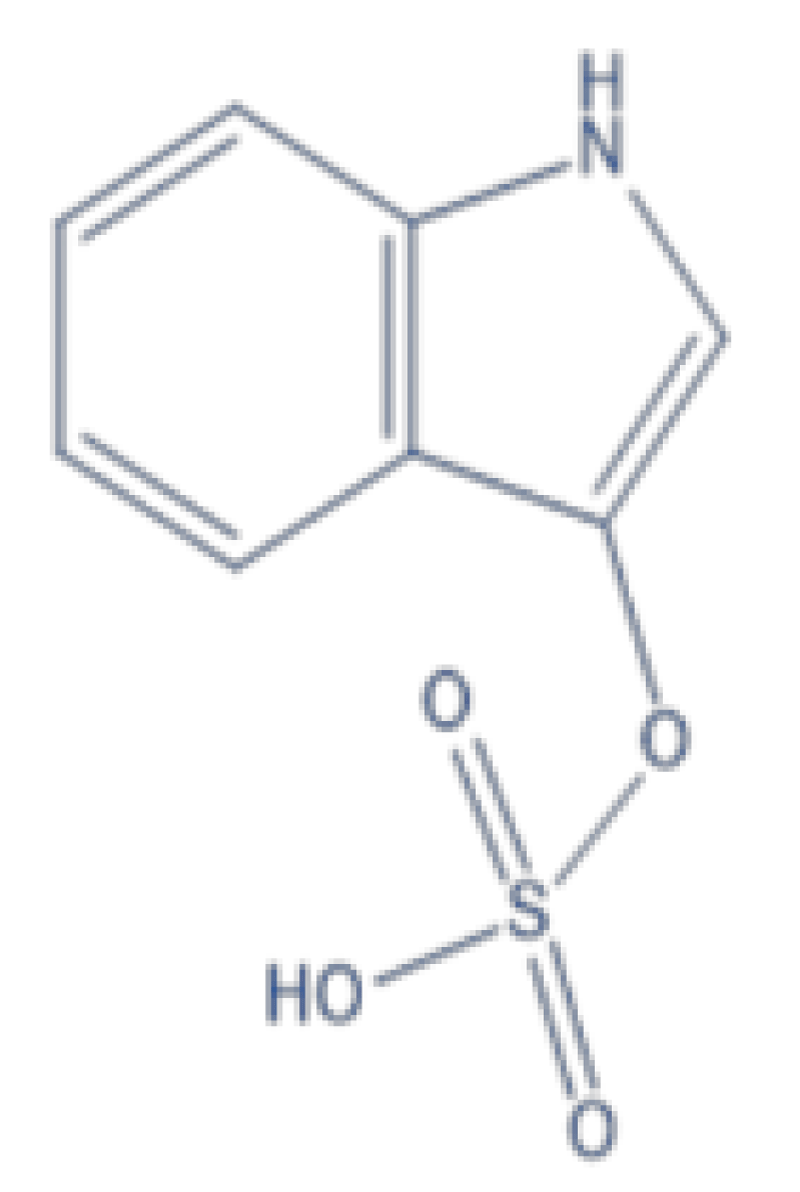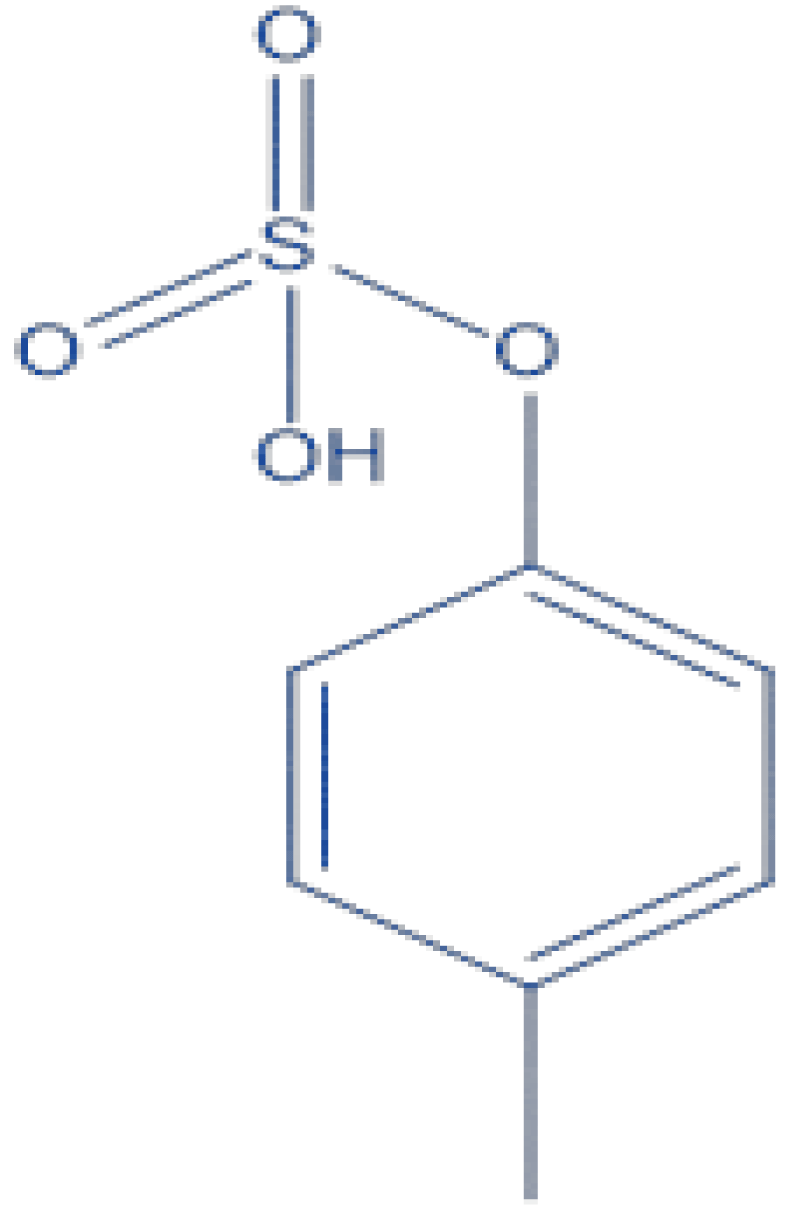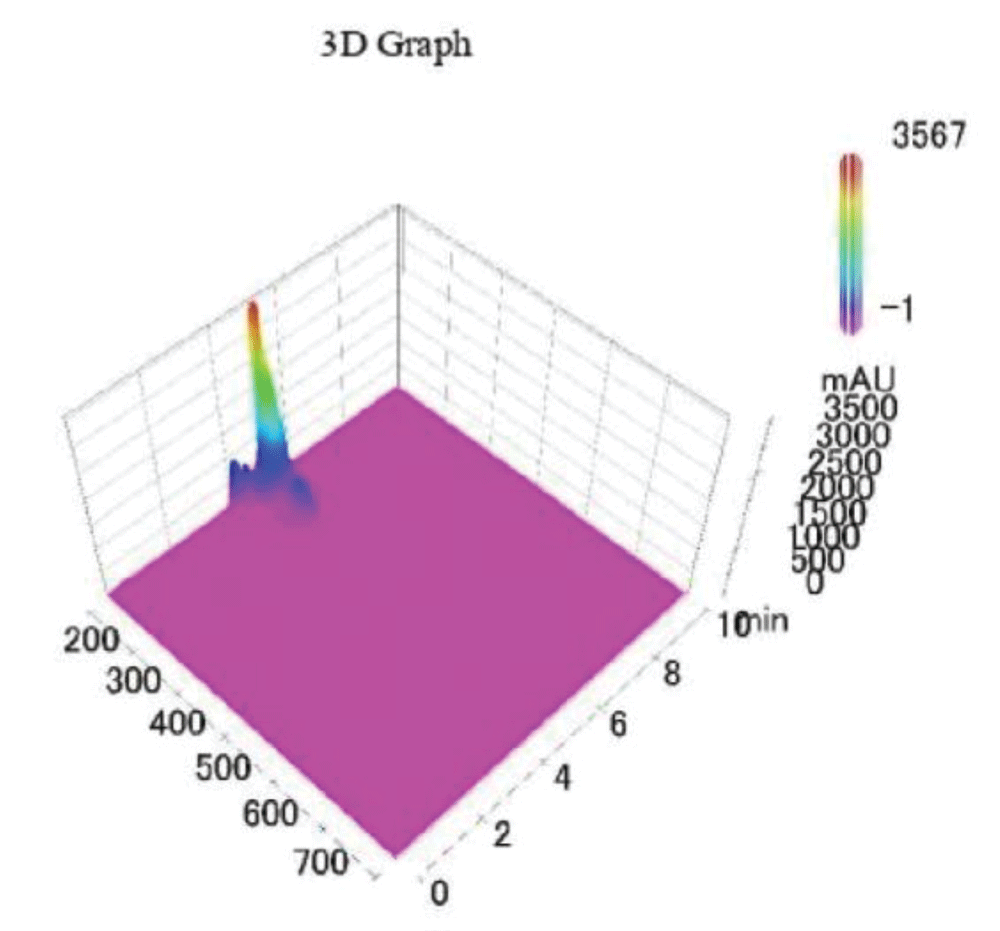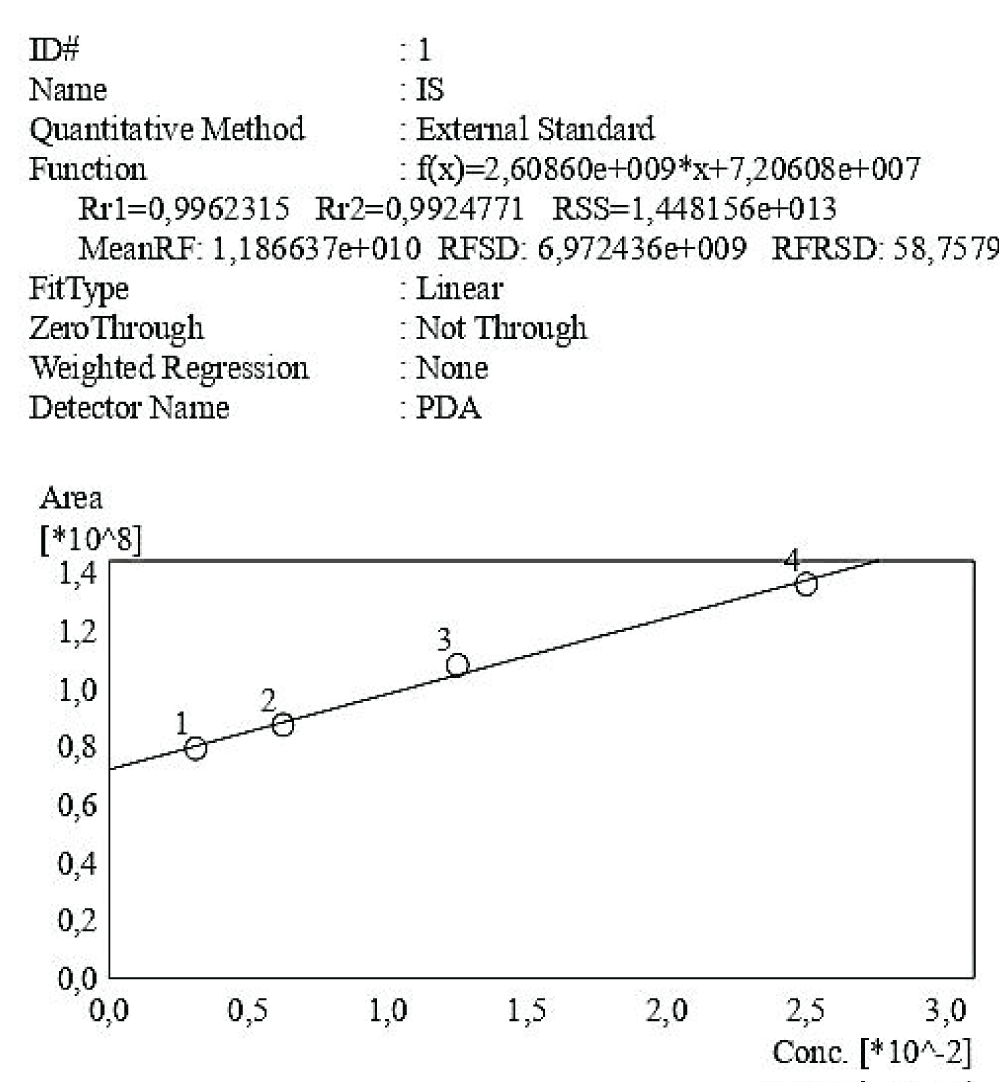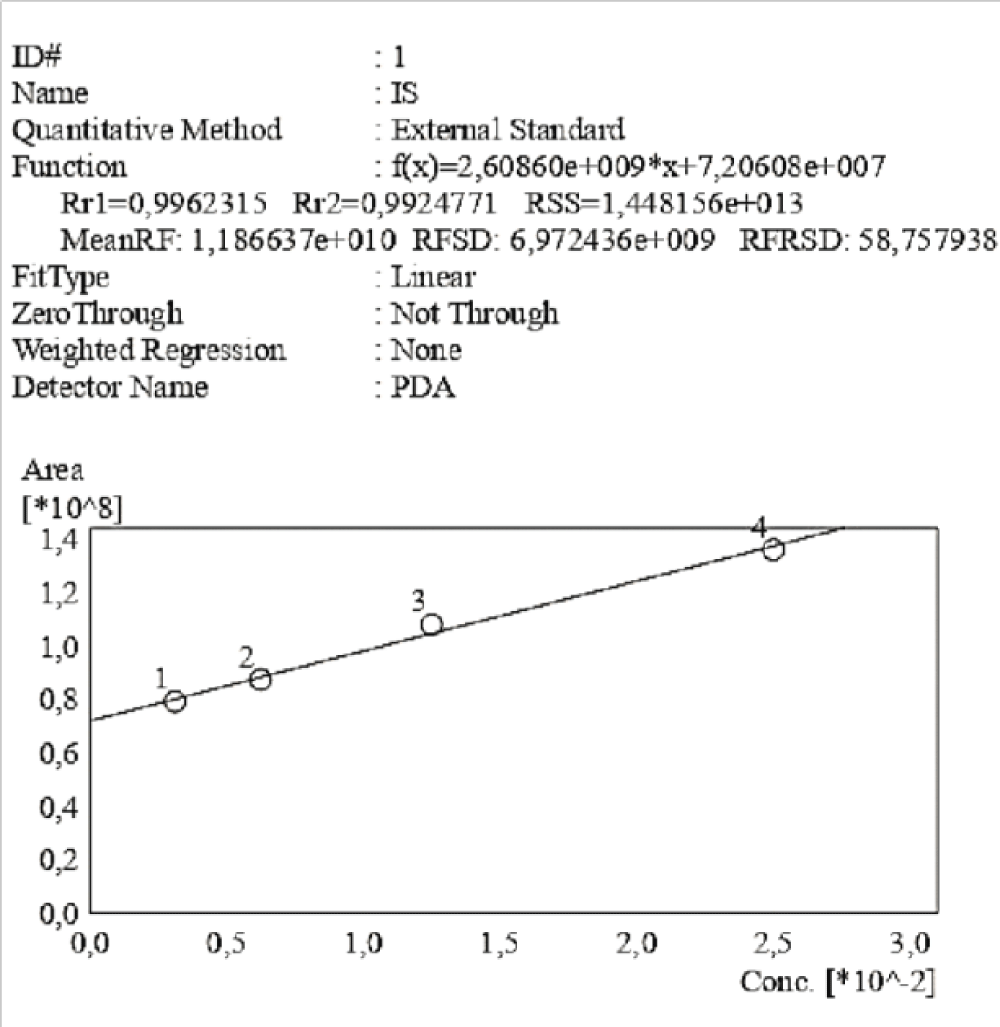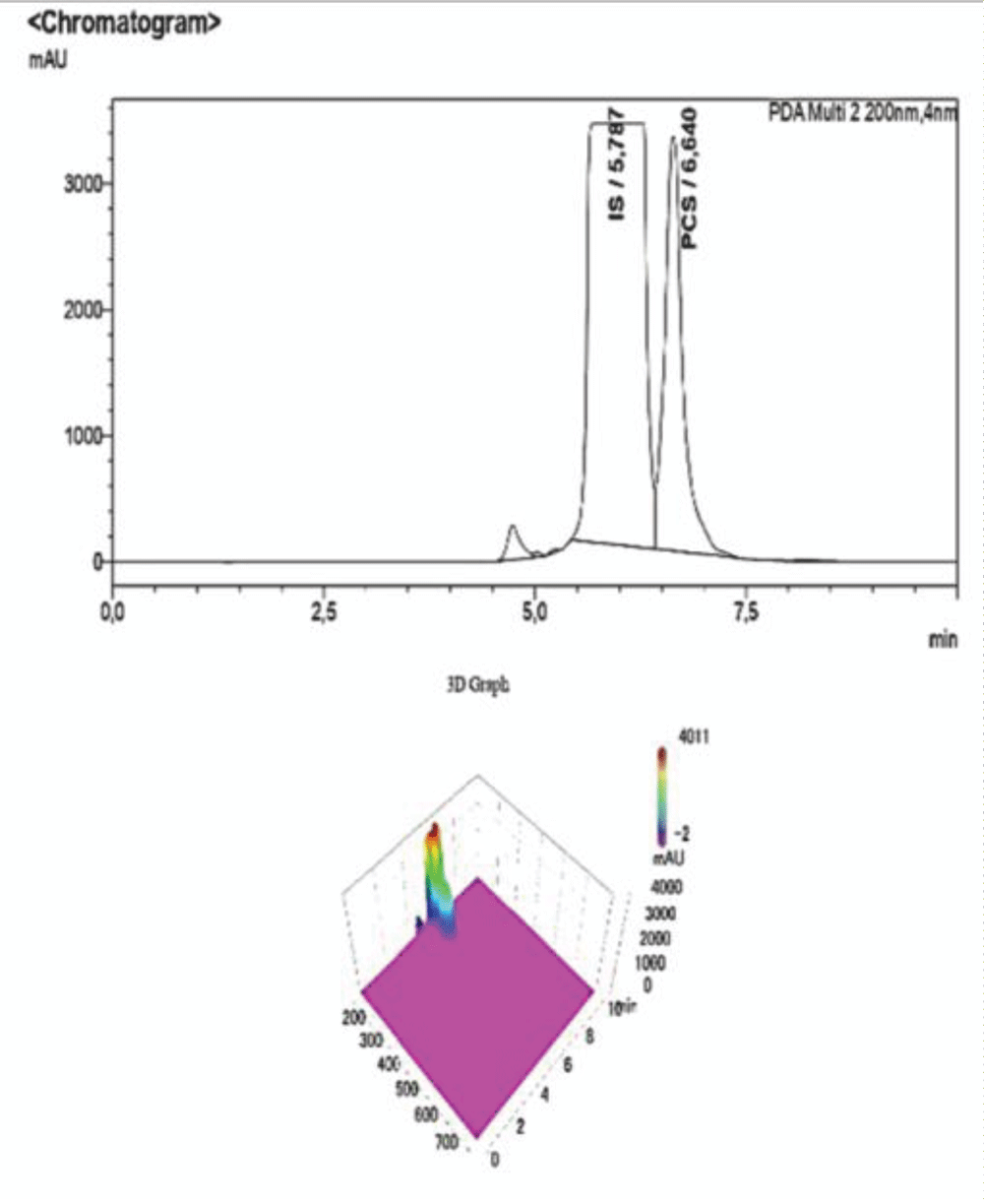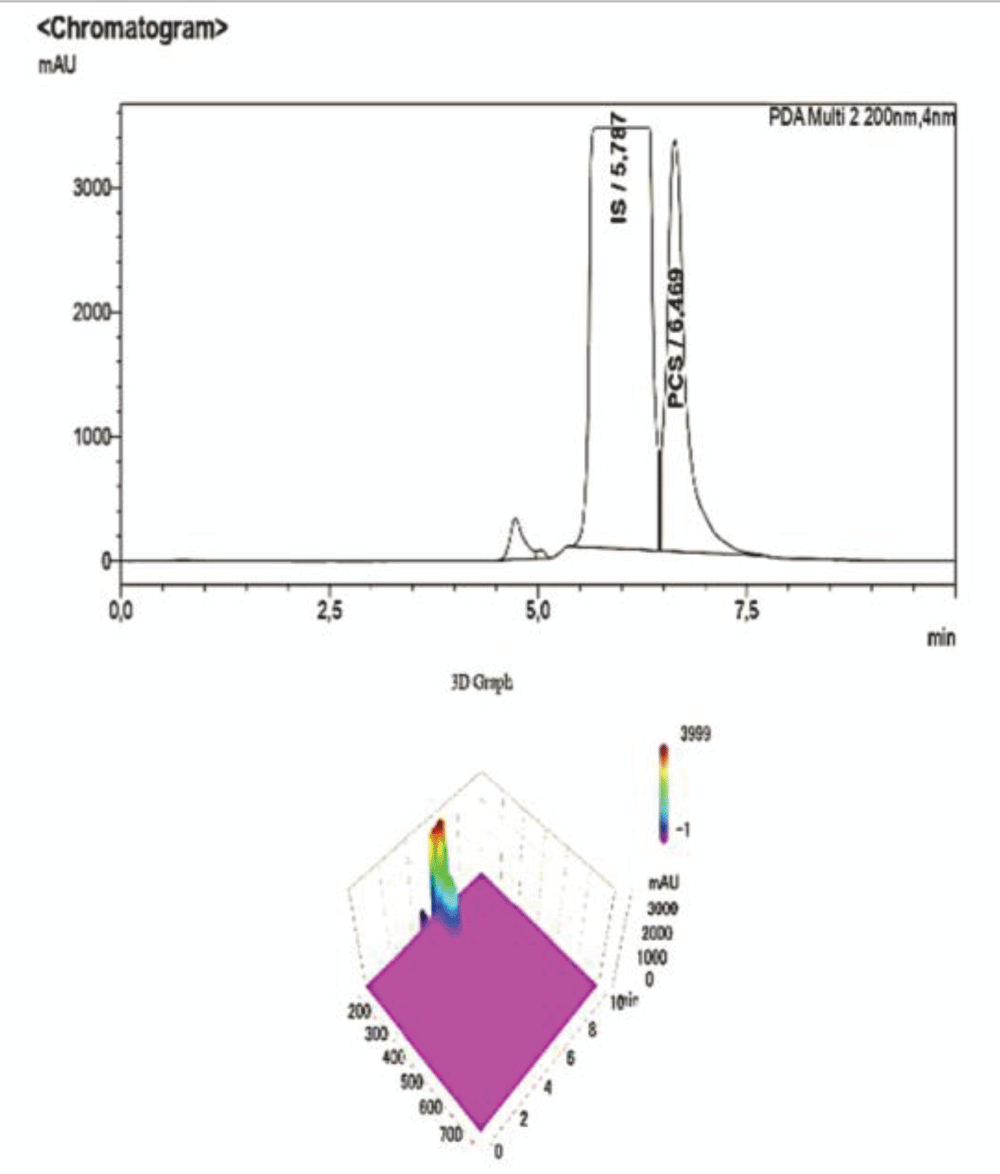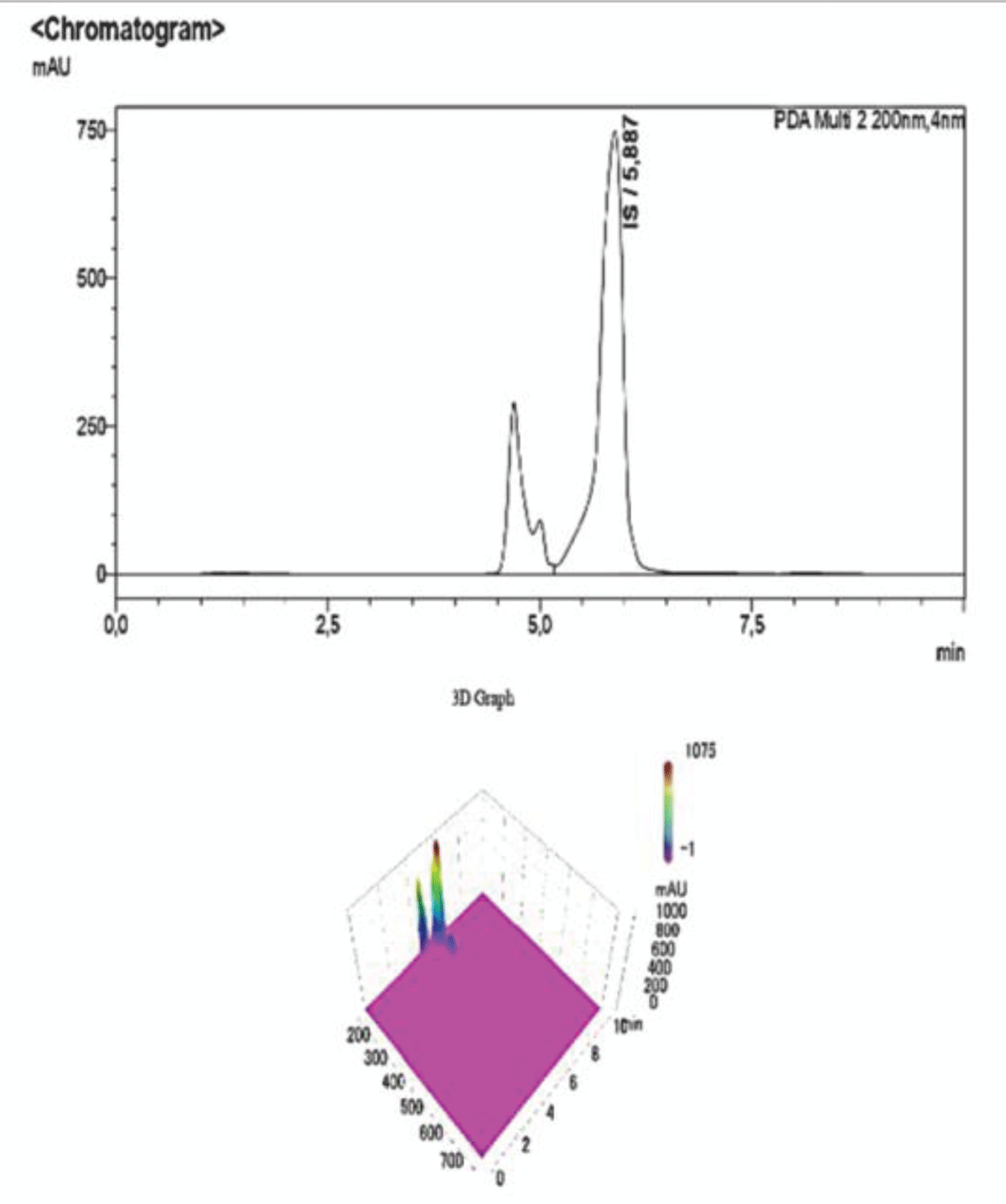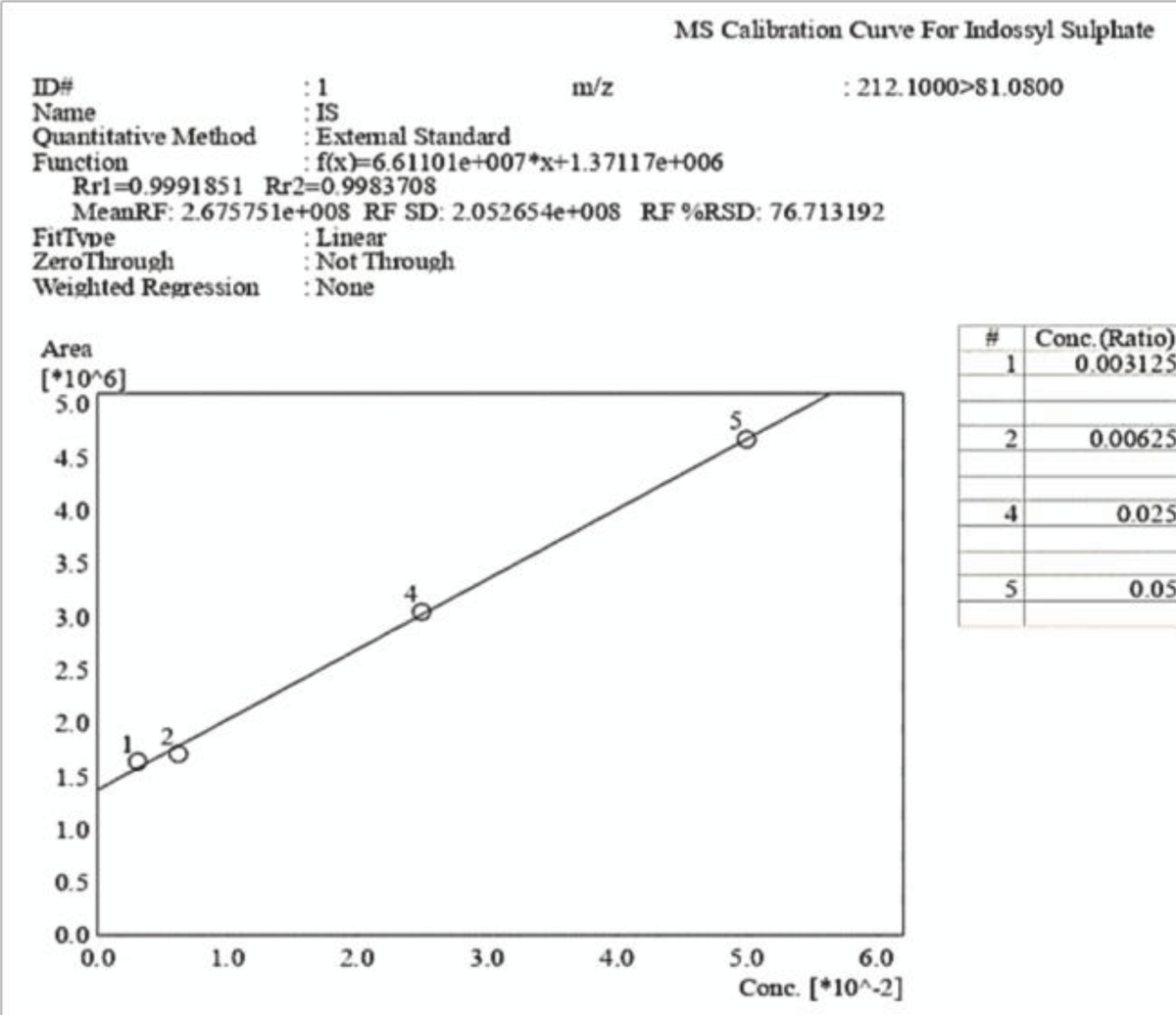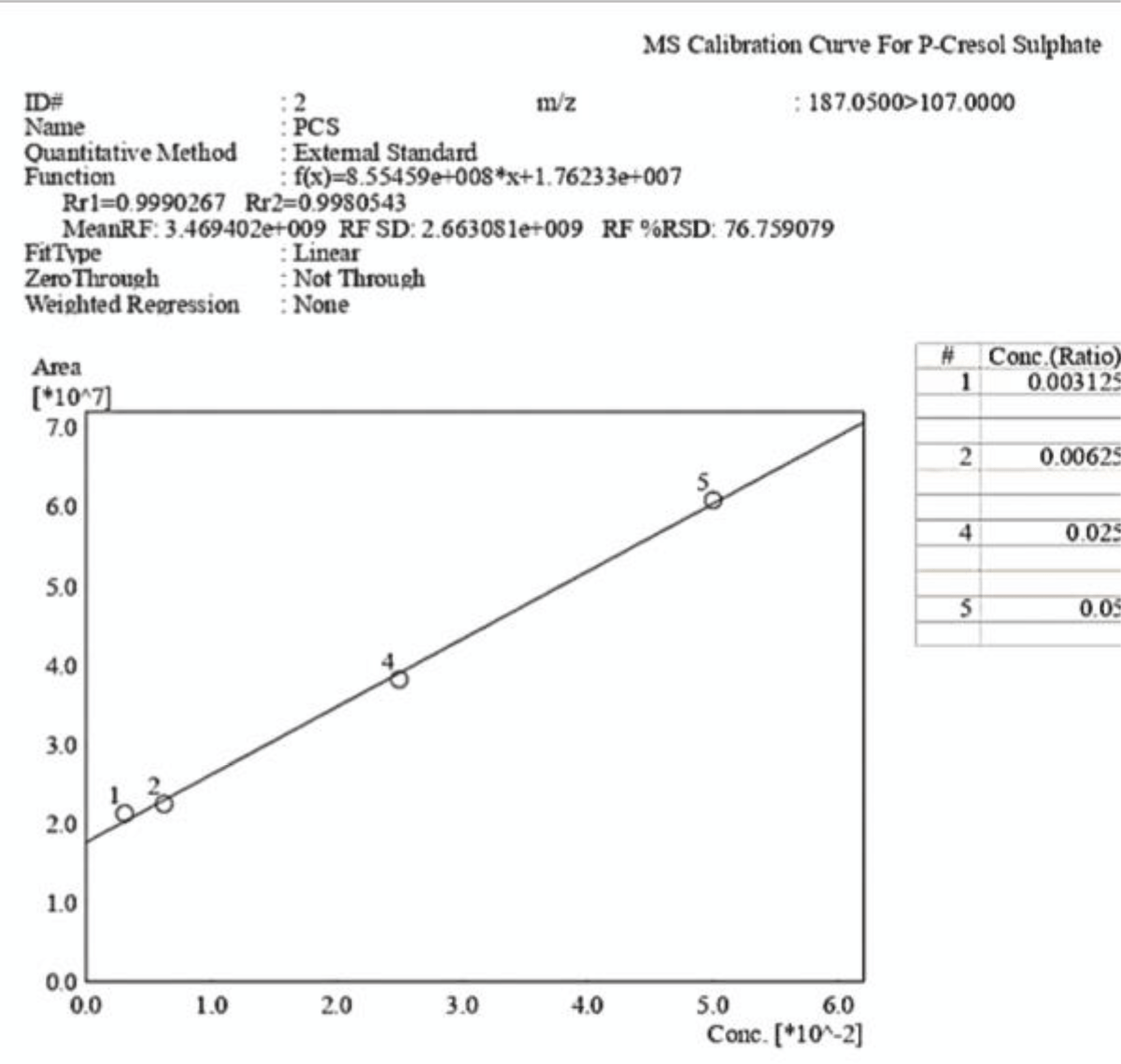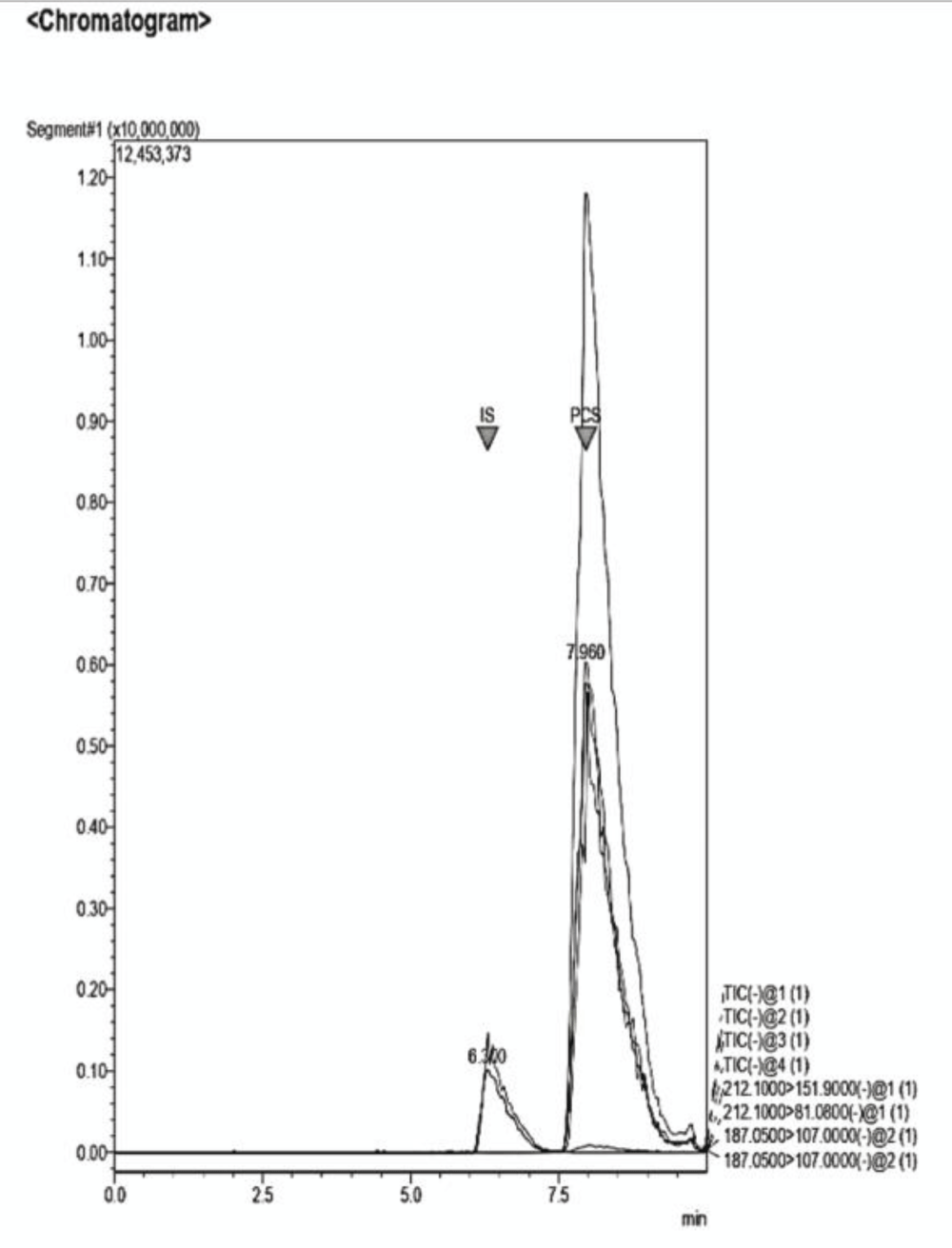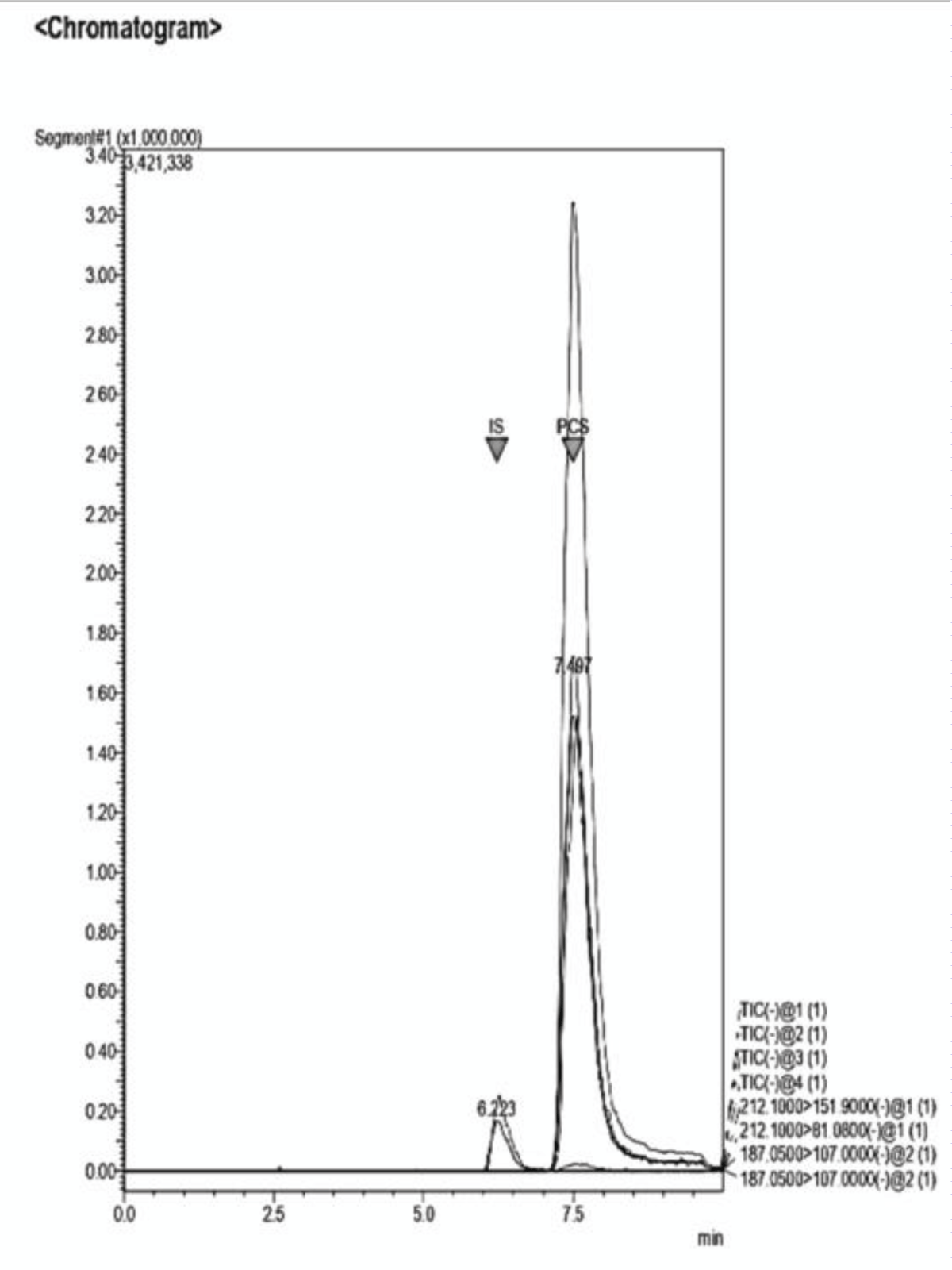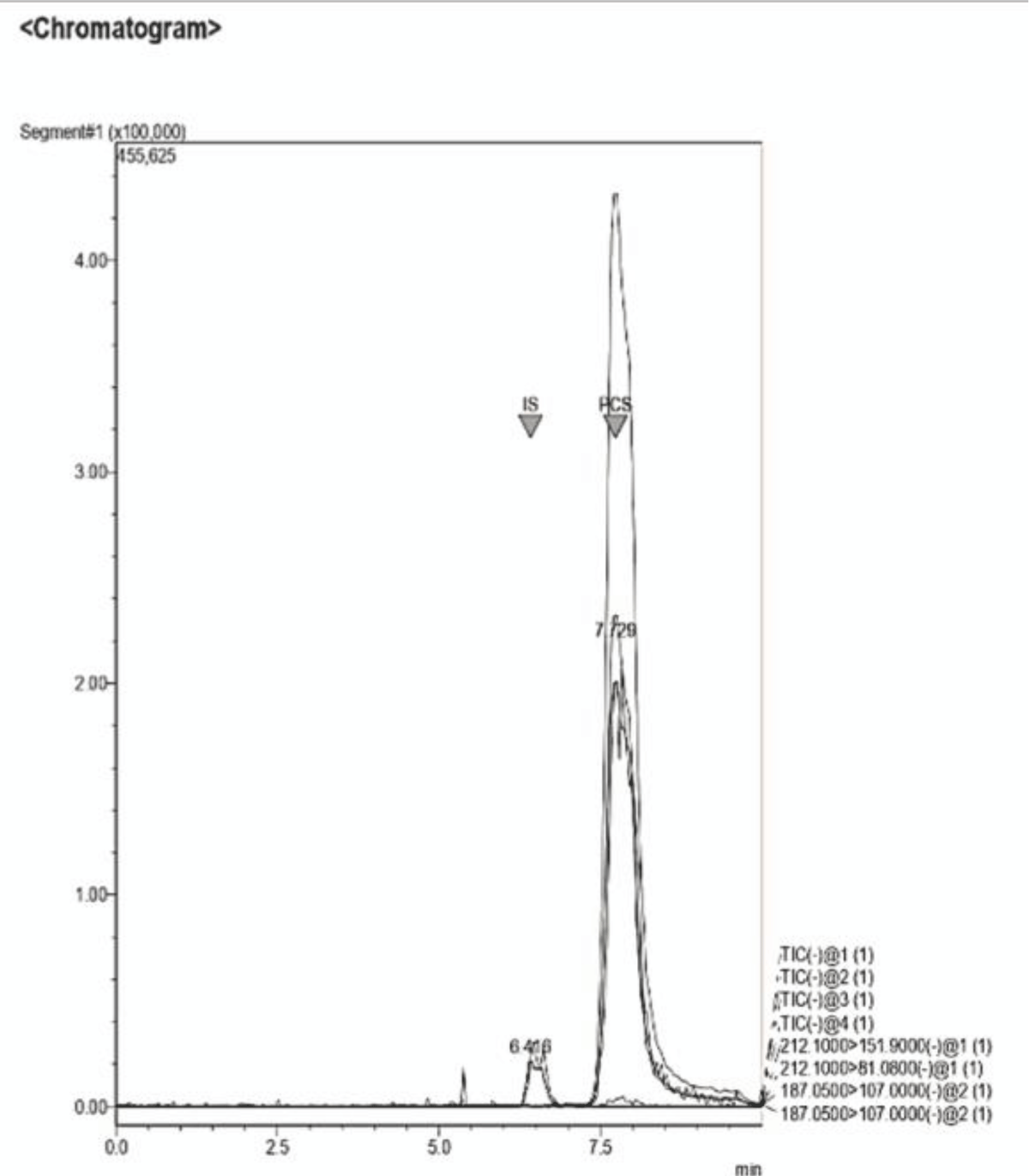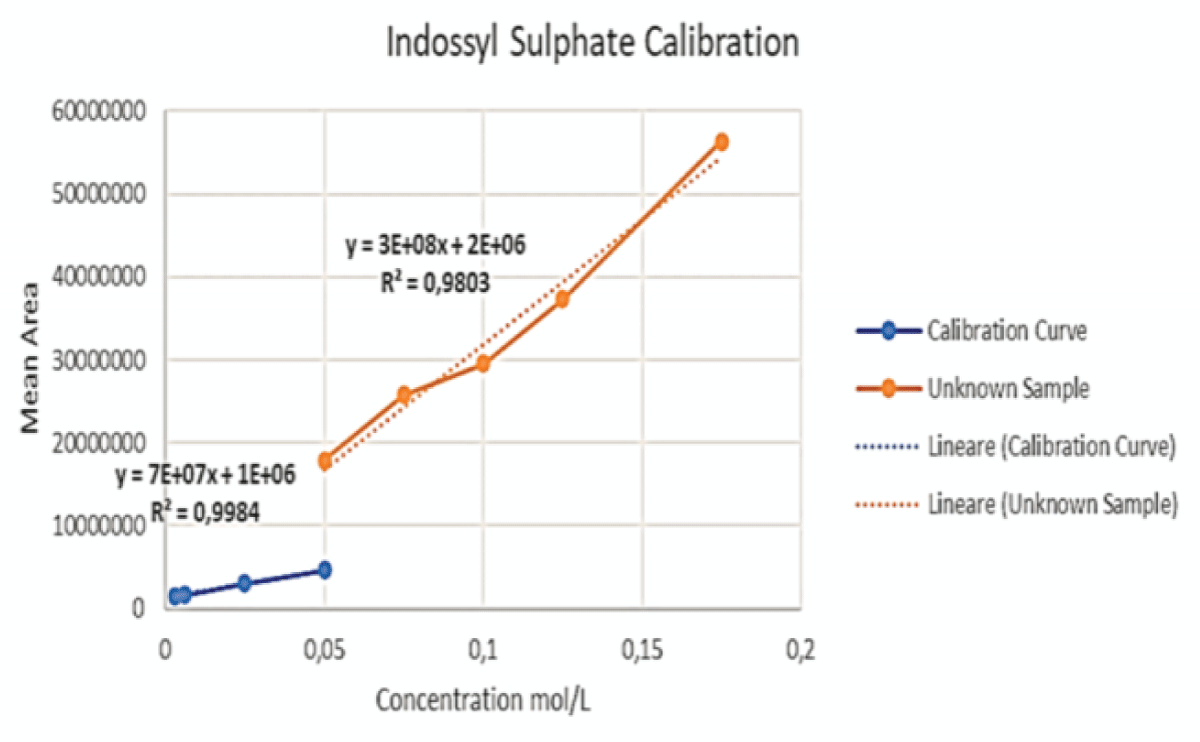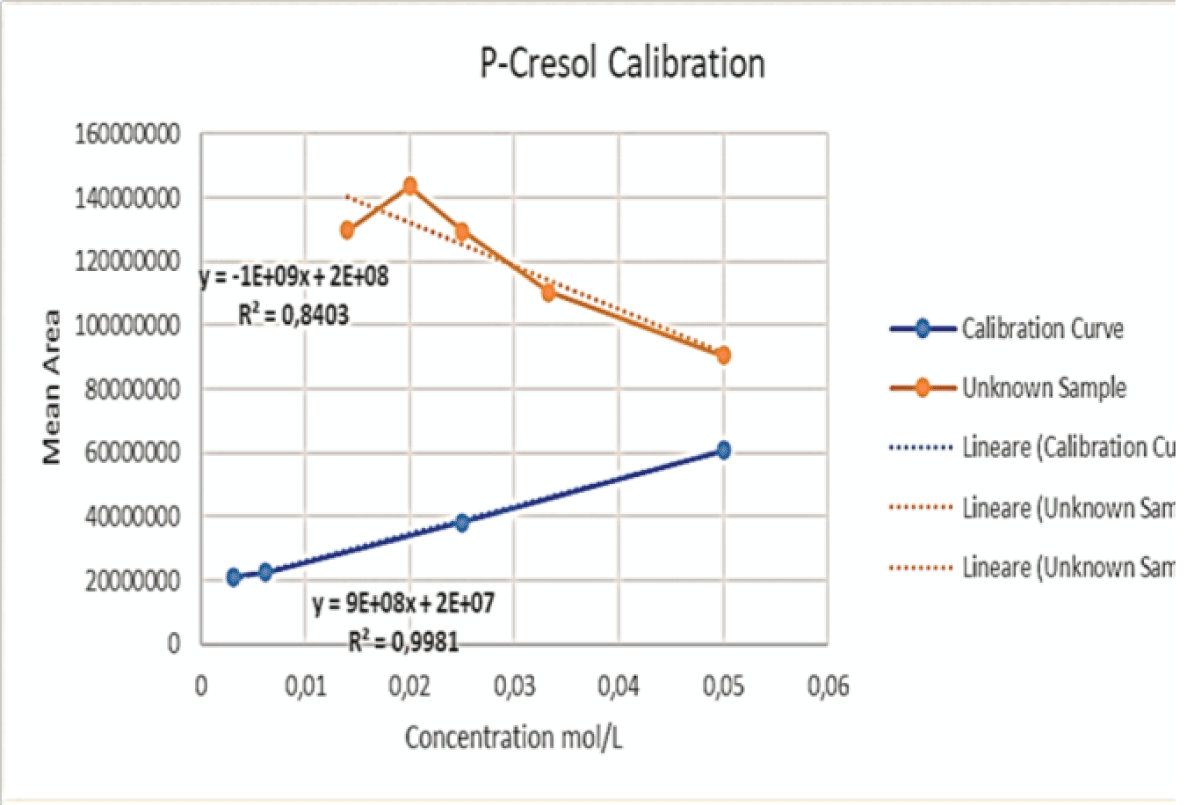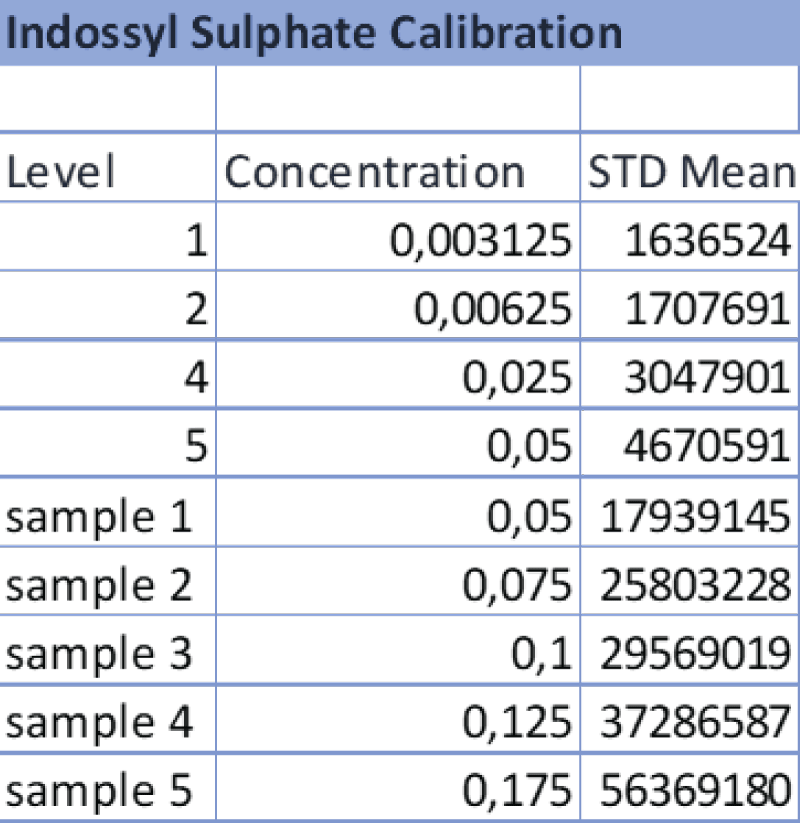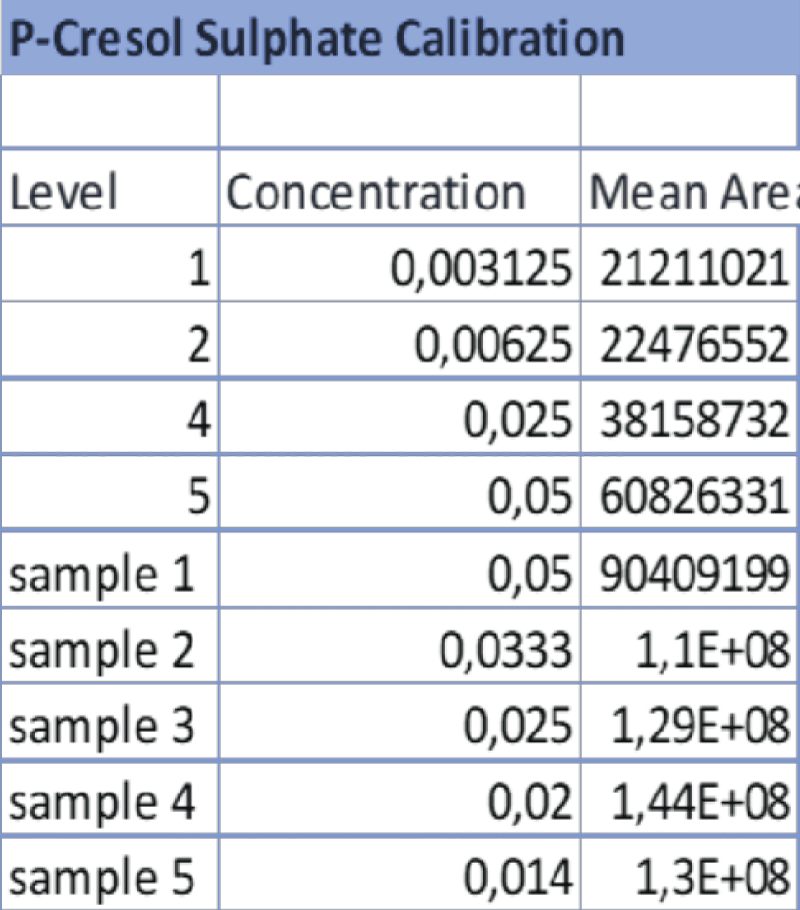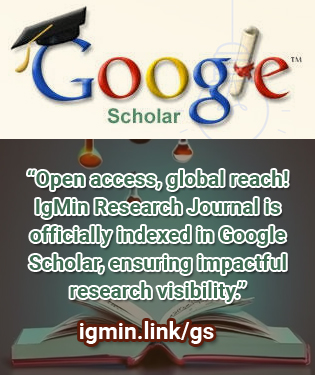要約
Uremic toxins (UTs) are compounds derived from the metabolism of dietary molecules such as tryptophan (Indossyl Sulphate, IS) and phenil-alanine (P-Cresyl Sulphate, PCS), that are normally eliminated by the kidneys of healthy patients. The accumulation of such toxins is an indicator of kidney disease at different degrees of severity, and the toxins can be found as free or protein bound in human biological samples. The toxicity of such compounds causes the loss of several biological functions, and the subjects suffering from such complications will need, more often than not, hemodialysis to properly excrete these toxins. Despite this not being a resolutive, but rather a symptom managing clinical approach, this is the most common course of treatment. Two analytical methods are proposed to quantify both the protein-bound and free forms of IS and PCS (HPLC-UV for the former; LC-MS/MS with ESI negative ionization for the latter), with lower variability and higher robustness than what is currently proposed, allowing for a precise simultaneous determination of the aforementioned UTs.




